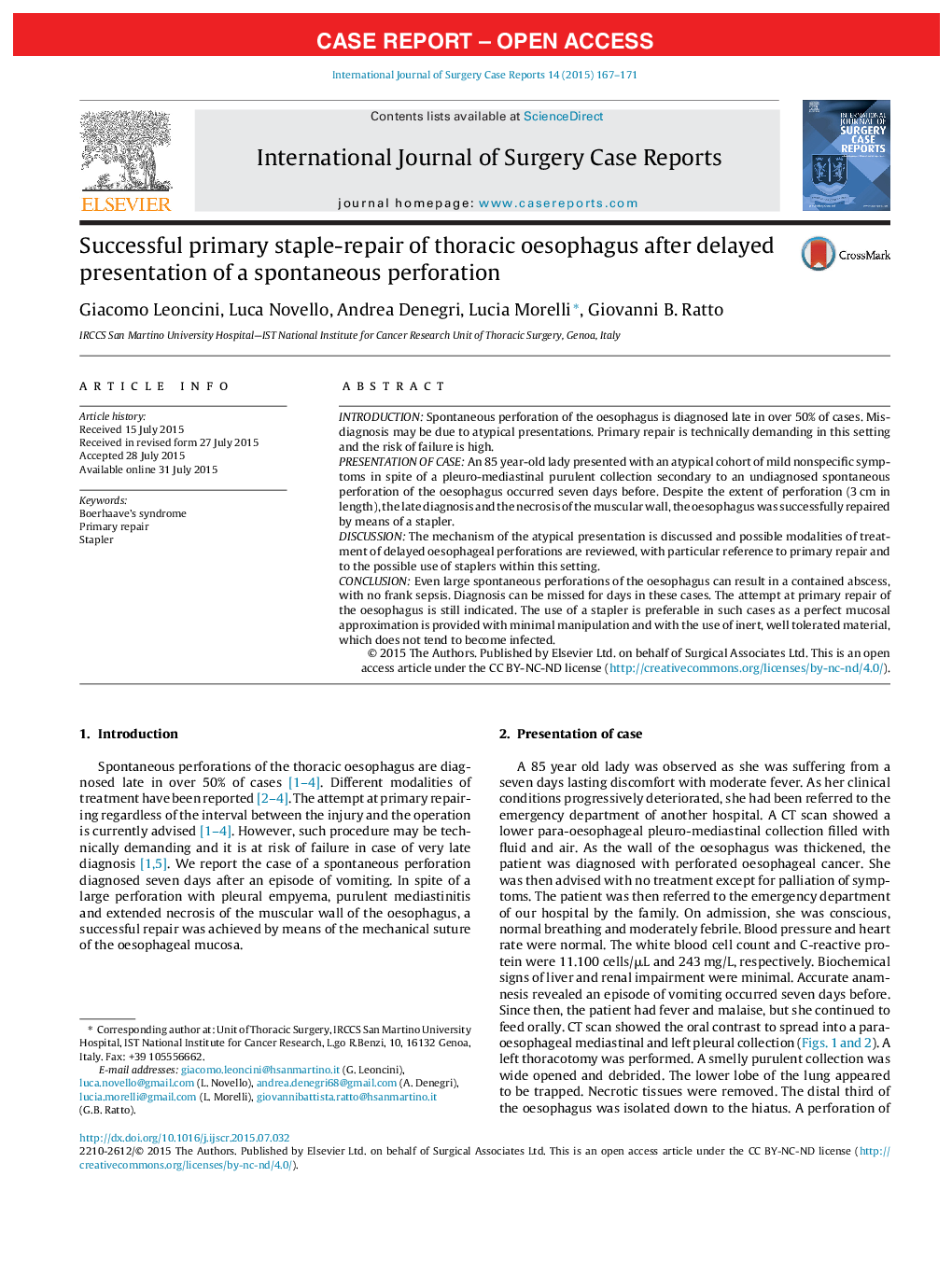| Article ID | Journal | Published Year | Pages | File Type |
|---|---|---|---|---|
| 4289056 | International Journal of Surgery Case Reports | 2015 | 5 Pages |
•Late diagnosis and atypical presentation of spontaneous rupture of the oesophagus.•Discrepancy between the clinical findings and the radiological and surgical ones.•Late attempt at repairing the oesophageal mucosa with endoscopic staplers.
IntroductionSpontaneous perforation of the oesophagus is diagnosed late in over 50% of cases. Misdiagnosis may be due to atypical presentations. Primary repair is technically demanding in this setting and the risk of failure is high.Presentation of caseAn 85 year-old lady presented with an atypical cohort of mild nonspecific symptoms in spite of a pleuro-mediastinal purulent collection secondary to an undiagnosed spontaneous perforation of the oesophagus occurred seven days before. Despite the extent of perforation (3 cm in length), the late diagnosis and the necrosis of the muscular wall, the oesophagus was successfully repaired by means of a stapler.DiscussionThe mechanism of the atypical presentation is discussed and possible modalities of treatment of delayed oesophageal perforations are reviewed, with particular reference to primary repair and to the possible use of staplers within this setting.ConclusionEven large spontaneous perforations of the oesophagus can result in a contained abscess, with no frank sepsis. Diagnosis can be missed for days in these cases. The attempt at primary repair of the oesophagus is still indicated. The use of a stapler is preferable in such cases as a perfect mucosal approximation is provided with minimal manipulation and with the use of inert, well tolerated material, which does not tend to become infected.
